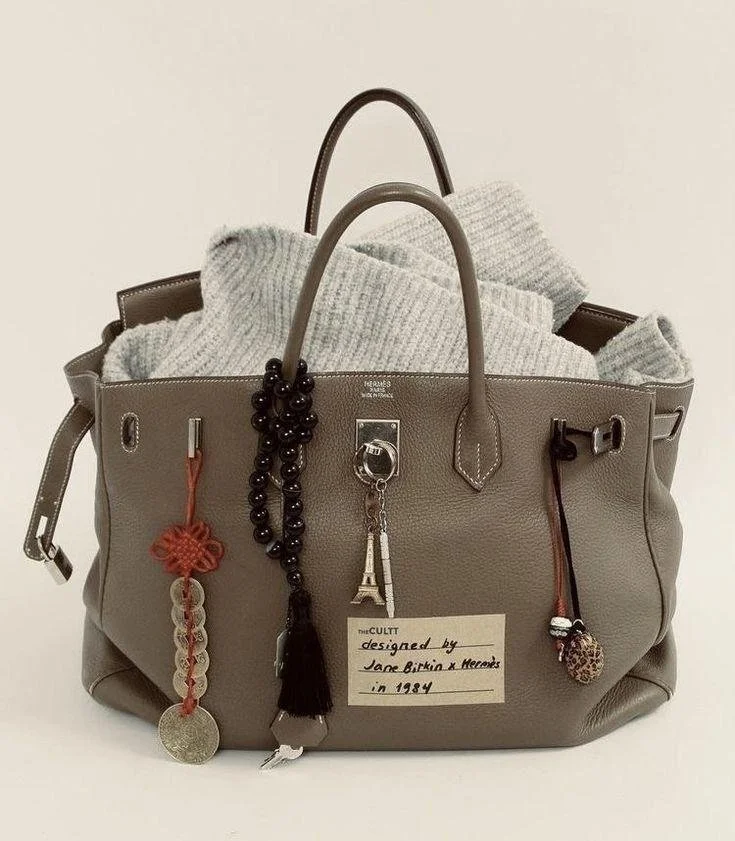Tariffs And Totes: Fashion’s Reckoning With Global Politics
Credit: Ralph Lauren FW25, courtesy of Vogue Runway
Tariffs And Totes: Fashion’s Reckoning With Global Politics
In April of 2025, the global fashion industry was rocked by a seismic political move as President Donald Trump unveiled one of the most aggressive trade tariff policies in modern history. Speaking from the White House Rose Garden, Trump announced a sweeping 10% tariff on all imported goods, with significantly higher rates on nations with which the U.S. holds a trade deficit. The fashion industry, already vulnerable after years of supply chain instability and inflation, became one of the hardest hit. The announcement triggered immediate turmoil, with major fashion stocks plummeting, Lululemon fell over 10%, Ralph Lauren and Nike each dropped 7%, and the ripples extended globally.
Under the new policy, Vietnam, the U.S.’s second largest apparel exporter after China, faced a 46% tariff. Cambodia was hit with 49%, Bangladesh 37%, and China’s rate rose to a staggering 54%. Even luxury exporters of the European Union, home to many of the world’s most prestigious fashion houses, was not spared, receiving a 20% duty. For an industry that imports over 98% of its clothing and 99% of its footwear, the economic consequences were immediate and inevitable.
What became painfully clear was that fashion’s globalized fantasy had been ruptured. For decades, the industry operated on a kind of curated illusion: that luxury was local, artisanal, and detached from the volatile rhythms of trade and labor politics. In reality, even the most iconic European brands such as Chanel, Dior, and Prada, rely on an international web of suppliers and manufacturers. Trump’s tariffs pierced this illusion. Luxury brands were now forced to confront their entanglement in global supply chains, and consumers were reminded that behind every designer label lies a spreadsheet of outsourced labor, fluctuating currencies, and shipping logistics.
Luxury fashion has historically positioned itself as resistant to economic instability, thriving even in moments of uncertainty. But this moment proved different. While the ultra-wealthy may continue to spend, it’s the “aspirational shopper” that symbolic middle-class consumer investing in one luxury item per season, who feels the pressure. These shoppers, already navigating inflation and stagnating wages, are now met with further price hikes, forcing a strategic recalibration of consumption. Fashion is no longer just about aesthetic desire. It’s about making smart, future proof choices.
This is where the concept of the “investment piece” becomes culturally and economically significant. In times of recession and uncertainty, consumers shift from trend-chasing to value-seeking. Products like Hermès’ Birkin bags, archival Rick Owens, and your mom’s vintage jewelery from Tiffany’s, take on new meaning not just as fashion statements but as liquid assets. The resale value of these items often eclipses their original price, placing them in a category closer to gold than to clothing. The Birkin, in particular, has famously outperformed the S&P 500 in long term value appreciation, transforming it from handbag to financial strategy.
This shift toward fashion-as-investment coincides with the rise of “quiet luxury”, a trend defined by muted tones, logo-less silhouettes, and timeless tailoring. Brands like The Row, Loro Piana, and Jil Sander came to represent a new kind of status: one that whispered stability rather than screamed opulence. In a world rattled by trade wars, inflation, and economic anxiety, quiet luxury offered an armor of minimalism. It suggested control, longevity, and the promise that your wardrobe could weather any political storm.
But fashion, as always, remains a study in contradiction. At the very same moment that quiet luxury flourished, we saw a parallel resurgence of risk: neon textiles, sheer dresses, micro shorts, and statement accessories. These trends offered a kind of resistance, a joyful defiance of austerity. For Gen Z, a generation raised on digital mayhem and climate consciousness, maximalist self expression functions simultaneously as a coping mechanism and social commentary. Layering irony with identity, Gen Z is dressing not for timelessness but for the feed, the mood, and the moment. Their wardrobes don’t scream recession proof - they're rebellion coded. Juxtaposing, we have Millenials, now in their 30’s to 40’s, as they're largely turning towards fashion’s safer havens. Many contend with mortgages, childcare, and the residual financial trauma of 2008. For them, “investment pieces” are exactly just that: investments. A well-made boot, a vintage fendi baguette, and limited edition polarized sunglasses with reliable resale value, these aren’t just purchases; they’re risk reduction strategies wrapped in mohair and silk.
While some consumers leaned into economic protection, others escaped through expressive consumption. What emerged was a fractured fashion identity, a kind of stylistic double consciousness shaped by instability.
The broader consequences of Trump’s tariffs are still unfolding. Factories in Southeast Asia, already operating on thin margins, are being squeezed harder than ever. Retailers are negotiating with suppliers to cut costs, and many brands face a difficult choice: absorb the losses or pass them along to consumers. Even companies producing in the U.S. aren’t safe, as most raw materials such as leather, textiles, trims, are still imported. LVMH, which operates Louis Vuitton factories in California and Texas, found that its domestic footprint was more symbolic- a mere gesture of localism, than self-sufficient as domestic manufacturing still relies on globally sourced materials.
In his tariff announcement, Trump declared this the beginning of a new “golden age of American manufacturing.” But for fashion, it signaled something else entirely. It marked the beginning of a new kind of consumer behavior, one where garments are scrutinized not only for their style but for their shelf life, return value, and ability to survive political upheaval. Fashion became a ledger, not just a look.
We are left with questions: What happens when the object of desire becomes a financial tool? How do we reconcile fashion’s need for constant reinvention with a market that increasingly values permanence? In a volatile world, the resale value of your sneakers might just say more about the economy than the Dow Jones ever could.

